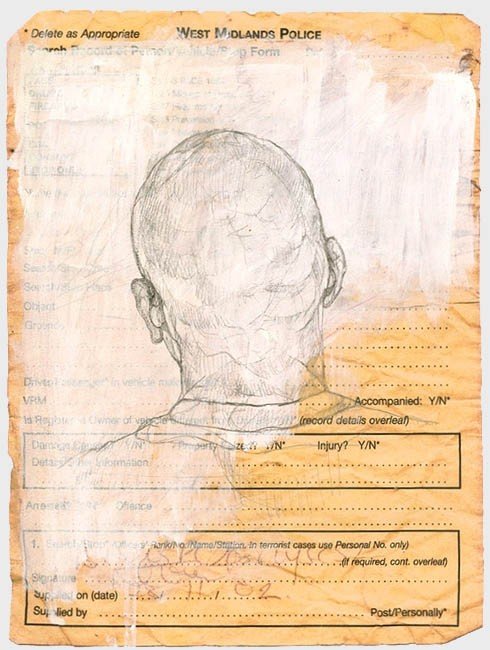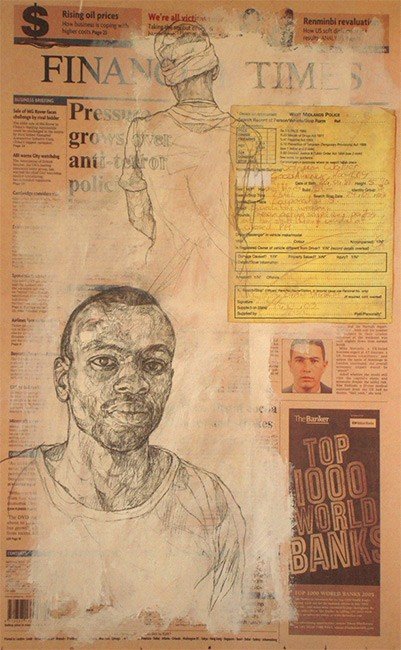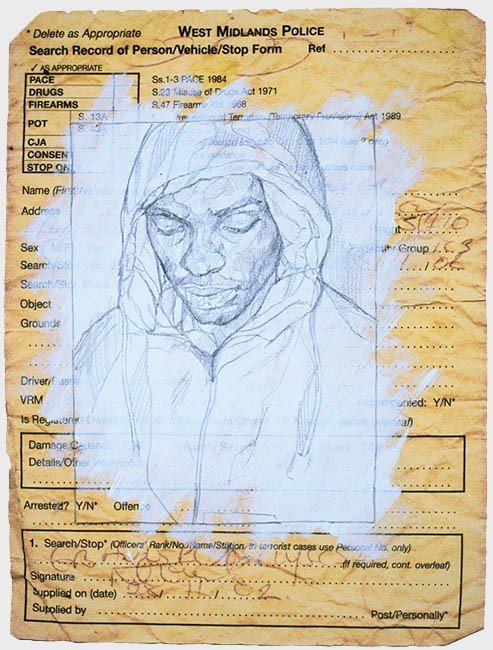Life Between Islands
When you first round the corner of the doorway into Life Between Islands, you're immediately greeted by the late 1940s and early 1960s. The artwork within this frame is mainly dominated by men, ‘Johanaan’ by Ronald Moody and dust jackets illustrated by Denis Williams for writer George Lamming's introductory novels run the length of the room. For a period so rife with political friction, the captions surrounding the work immediately denote a strange sense of hesitation to name the explicitly violent role of whiteness, racism and empire in Britain. This features both in the captions and self-descriptions from artists; In an troubling explanatory note Lamming says ‘the colonial experience, though not a physical cruelty, was the breeding ground of every uncertainty of the self.’ Moving through to the next room ahead, various artworks clash with these tentatively offered themes. The physical struggles experienced by Caribbean people first residing within Britain, now captured brilliantly within Barbara Walker’s mixed media work, juxtaposes the gentle introduction with strange effect. Walker’s work, consisting of portraits of her teenage son layered over stop and search (an intimately physical cruelty) forms from the West Midland Police.
While it would be reductive to expect a fully synchronised rendition of Black narratives into a singular experience, the universal impact of empire and anti-Blackness remains undeniable in the nature of migration and diaspora. Eddie Chamber’s swastika shaped union jack titled ‘Destruction of the National Front’ and Tam Joseph’s painting of a Masquerader surrounded by police and snarling dogs marks the unignorable physical violence faced by migrating Caribbean communities. Joseph, who was moved to create this image after witnessing a similar scene at Nottinghill Carnival said ‘I wanted to show this figure–in Yoruba it’s known as Egungun... He’s a fun figure. He’s not menacing. But he is being contained by the police and he’s looking for a way out.’ Moving between the rooms of Life Between Islands, is then to be faced with a disorientating thematic experience in which the empire is both nullified and explicitly addressed.The scale of Life Between Islands is vast and although there is a structural attempt to categorise the artists and their work in a temporal format (past present and future), there is a distinct lack of thematic curation that easily disorients the viewer. The scale of the exhibition is overwhelming and leads to an over-saturation of stimuli that disallows a deep engagement with each individual artists’ work showing. We are propelled within the space of two walls from powerful immersive British-Caribbean culture experiences to Amerindian and African spiritual beliefs and visual cultures. In this way the parameters of Life Between Islands are opened to include lives across not just islands and cultures but entire countries and continents. The most bizarre epitome of this was the choice to include the work of Lisa Brice, a South African white artist whose work was inspired by Caribbean island life. The effect was a discordant chorus of perspectives across periods, race and continents.
The most immersive and emotionally stirring exhibit was Michael McMillan's recreation of a typical West-Indian front room. A physical island of retreat from the cacophony of perspectives outside, this immersive installation became an island in itself; A space that could speak home purely through symbol. McMillain’s front room was an authentic simulacra complete with oversized glass fish on the wall alongside white Jesus. Stuck to the floor was a classic Stonies Original Green Ginger Wine, a bottle of Mr Sheen complete with accompanying yellow microfibre cloth and The Glass Cabinet with the good china locked inside. Squatting next to the vinyls, you can flick through records of Ella Fitzgerald, Bob Marley and The Wailers, The Stylistics and Simon & The Garfunkles. All centred by a burnt orange carpet with instantly familiar patterning of shared Black-British living.
The exhibition was both inspiring and exhausting. Despite some truly beautiful work on show, the curation as a whole failed to truly shine a clear and understanding spotlight on each artist’s work by throwing a wide array of themes together under a broad Caribbean narrative. It took over two hours to get through the exhibition and that was without watching the various films in side-rooms – some of which ran for an hour each. There is no denying the power or emotional beauty from pieces by artists such as Ingrid Pollard, Derek Walcott and Charlie Phillips, however the endless tunnels leading into new rooms, ironically swallowed up the space each piece and its viewer deserved. Life Between Islands could have easily been six or seven separate exhibitions catalogued throughout the year with a tighter focus on thematic curation. It would have been lovely to have an exhibit dedicated solely to Black-British Caribbean women. The comment of the collection of Caribbean and Caribbean inspired art with reference to the 2020’s Black Lives Matter protests made us extremely wary. The gathering of Black art much like our lives, never bodes well when pushed under the umbrella of a into the focus of a ‘seminal moment’ this type of spotlighting always robs of longevity and nuance. Consistency, thematic sensitivity and culturally focused distinctions are also highly important. In the future we hope to see more exhibitions that understand the individual themes in our work are metrics preferable to identity and place and can hold not only the sense of Black-British Caribbean identity but the most authentic appreciation of the work of the Black artists themselves.





